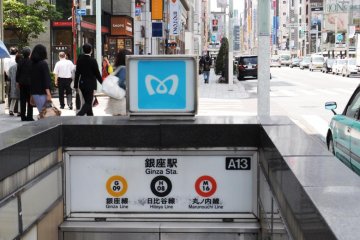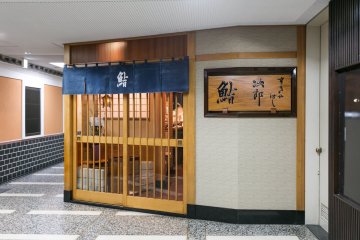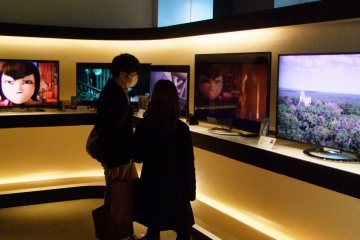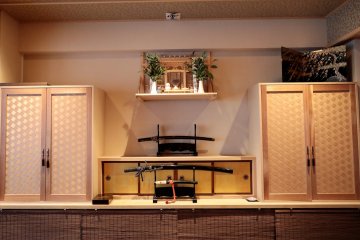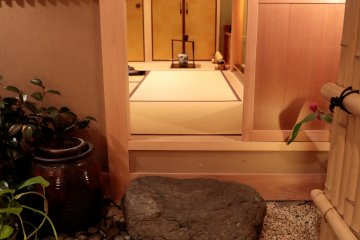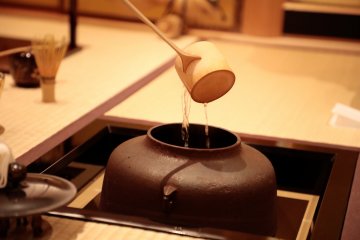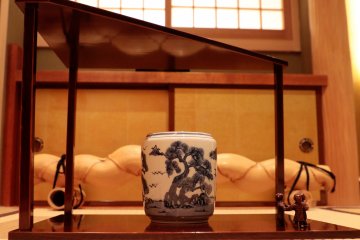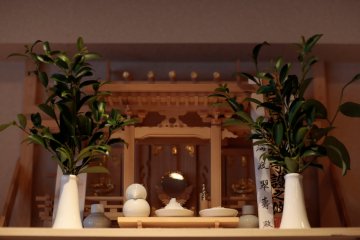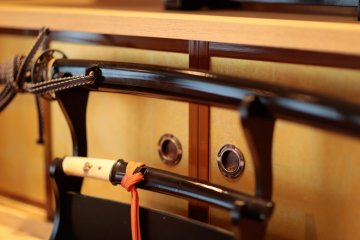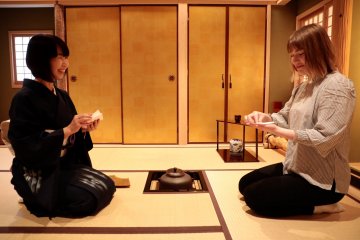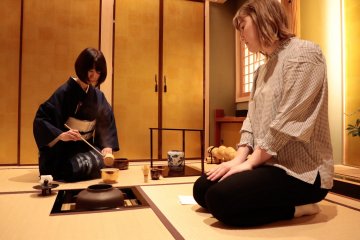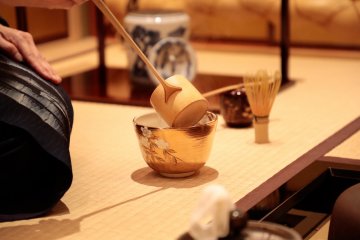In the glamourous hustle and bustle of downtown Ginza, it’s hard to imagine that a place like HiSui is more than a mirage. HiSui offers a step back in time, welcoming international and Japanese guests alike into authentic Japanese culture. Here, you can begin the path into learning the profound subtleties of Japanese art forms.
HiSui Tokyo is a Multi-Art school specialising in Waso (Kimono dressing), Shodo (Japanese Calligraphy), Sado (Tea Ceremony) and Batto (Japanese Swordsmanship). Located on the fifth floor of a conventional office block, HiSui channels traditional Japan; upon opening the glass doors you find yourself in a scene direct from the Azuchi-Momoyama period. HiSui boasts its own wonderful Teahouse, Suian¸ which replicates the 16th century style tea room of a wealthy merchant or warlord. It also has its own Dojo training hall where you can master the powerful strokes of the sword or calligraphy brush.
HiSui invites guests to not only see Japanese culture, but to experience it first hand and become a part of maintaining tradition. The variety of courses available at HiSui Tokyo ranges from a single 10,000 yen lesson, to a full experience package where you are taught how to wear Kimono and learn the three arts befitting 16th century Japan; tea ceremony, swordsmanship and calligraphy.

I was lucky enough to be taught about Sado by Suiko Ajima, who has been practicing tea ceremony since childhood. The lesson begins as you enter the tea-room. At Suian you must enter through the Nijiriguchi, a tiny doorway at the corner of the room which requires the user to bend, designed to create an atmosphere of humility and equality amongst guests. The tatami room is a rich feast for the eyes; the Tokonoma alcove changes with the season.

I was met with the subtle beauty of early spring Ikebana and a hand-written calligraphy scroll evoking peace and tranquillity. This Tokonoma decoration is changed for each guest so you are guaranteed a unique experience. Suiko Ajima guided me through the process of Sado, explaining in detail the unique hand gestures, bowl placement and the importance of each ritual.

The sense of the season ran throughout my experience at HiSui. I was presented with sweets in the shape of a sakura blossom and a gentle river, whilst my exquisite chawan (tea bowl) was decorated with delicate branches of sakura. Here at HiSui, you are guided through the courses in English, with a variety of language interpreters available.
Suiko adjusts my sitting position, clearly explains each ritualistic movement and corrects my matcha tea whisking form. I appreciated the sombre atmosphere, but the staff welcomed a giggle as we navigated the right way to make the final slurping sound to indicate to your host you have finished your tea.
This is a unique way to engage with traditional Japanese culture in the heart of Tokyo. The range of courses at HiSui ensures that everyone can find a tradition or skill that they enjoy and can begin to understand the deep history and meaning of Japanese culture.



